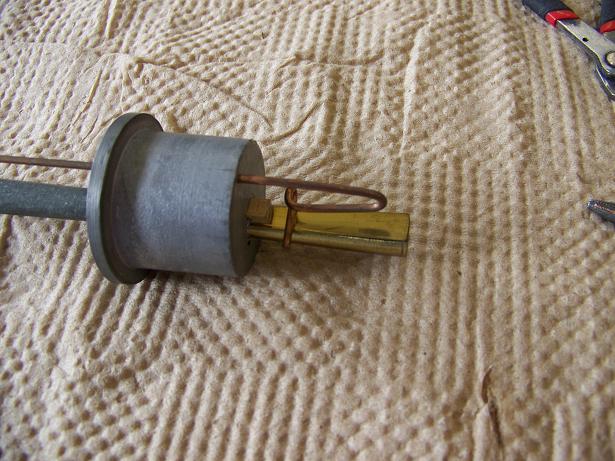
Typical Cleaning of a Reed Pipe

This is the business end of an Oboe pipe. It is referred to as a reed pipe because the sound of the pipe is created by a vibrating brass reed. The large gray cylindrical object is the block. Into this is inserted the tuning wire (top), tongue or reed (middle), and shallot (bottom). The tongue and shallot are secured into the block by a wooden wedge. The shallot is a hollow tube with one side machined flat and containing an opening against which the reed vibrates when the pipe is blown. Unlike the reeds in a pump organ which vibrate freely within a slot, reeds of the type shown here strike against the metal shallot creating a much more brassy tone than that of a pump organ. After many years the reeds, shallots, and pipes get dirty, sometimes corroded, and often debris (like dead bugs) fall down in the pipes. This affects the sound of the pipe and sometimes stops it from sounding all together. At this time the pipes need to be disassembled and cleaned. The pictures below show the basic cleaning process.
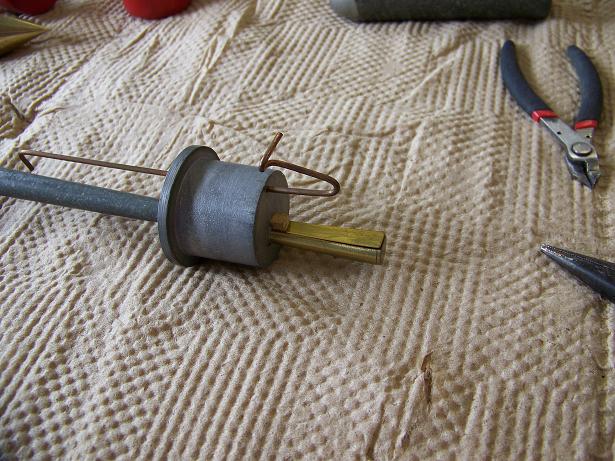
The first step in cleaning is to disassemble the pipes. The first step of this is to flip the tuning wire up out of the way.
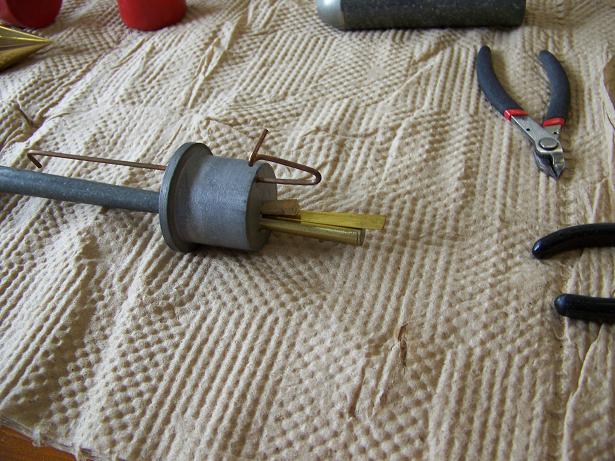
Next the wedge, tongue, and shallot are removed from the block.
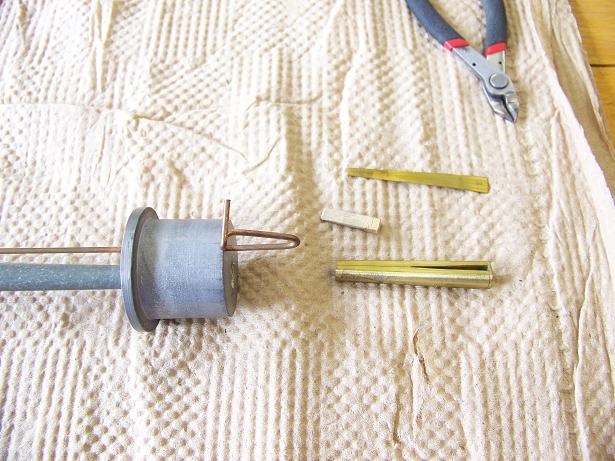
Here are all the pieces after being disassembled. The tongue (top) is a thin slip of brass that has been curved very carefully and expertly to vibrate against the shallot (bottom) at the correct wind pressure. The tiniest change in this curve or the tiniest spec of dust or corrosion in the wrong place can cause drastic changes in the speech and sound of the pipes. You can also see the tapered opening in the shallot against which the tongue vibrates. While this tongue and shallot are cleaner than the some of the other pipes in this set, we clean all the pipes so that the entire set is identical.
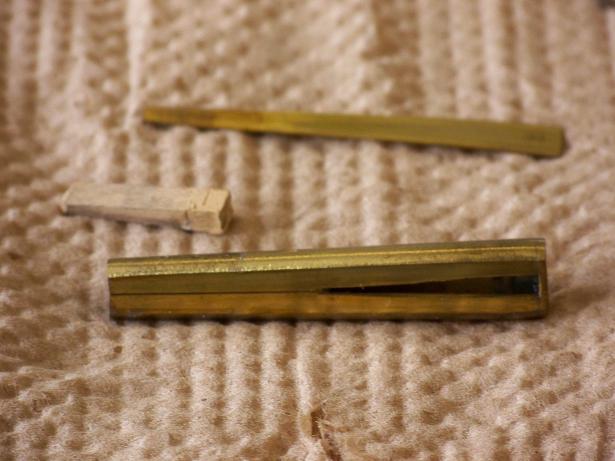
Here is a closeup of shallot prior to cleaning. Note the darker areas of discoloration of the brass.
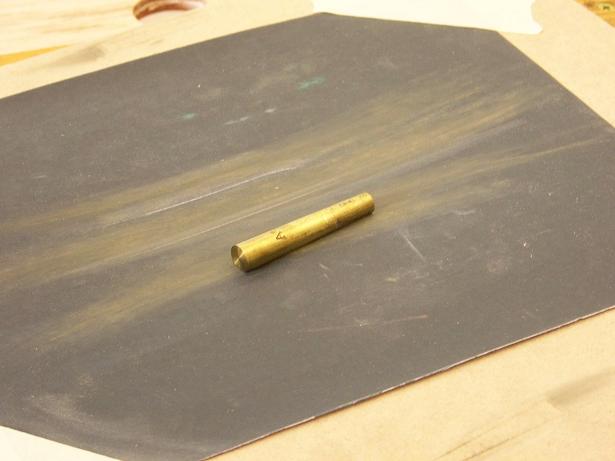
The shallot is cleaned by rubbing it gently on a sheet of very fine sand paper taped down to a flat surface until the brass is clean.
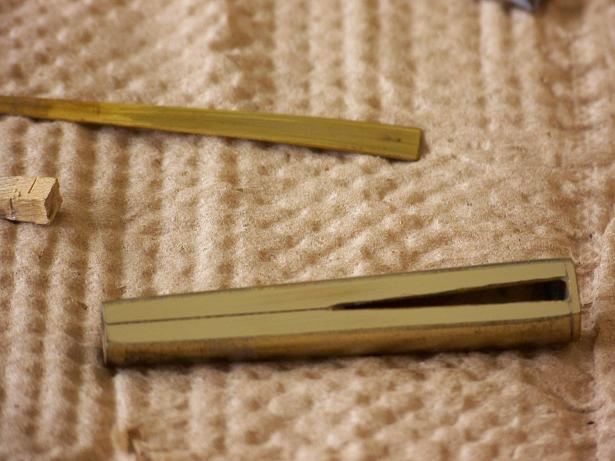
Here is the shallot after cleaning. The brass is clean and bright.
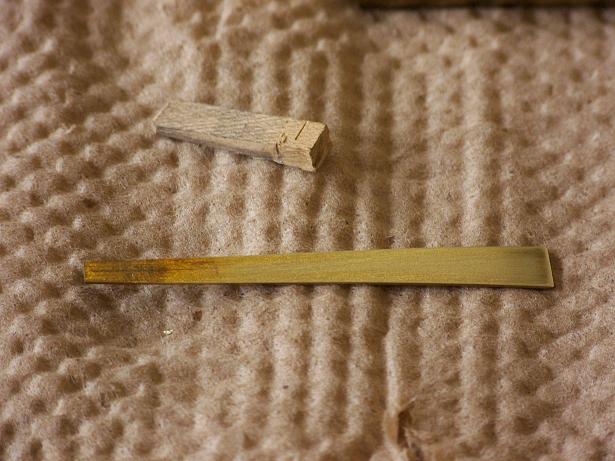
Here is the tongue after being very gently cleaned. It is important to be very gently with this tongue so as not to disturb the curve that was imparted to the metal when it was voiced as this will caused the pipe to sound poorly or not speak thereby requiring further voicing work. The wedge, made of maple, is also shown here in close up.
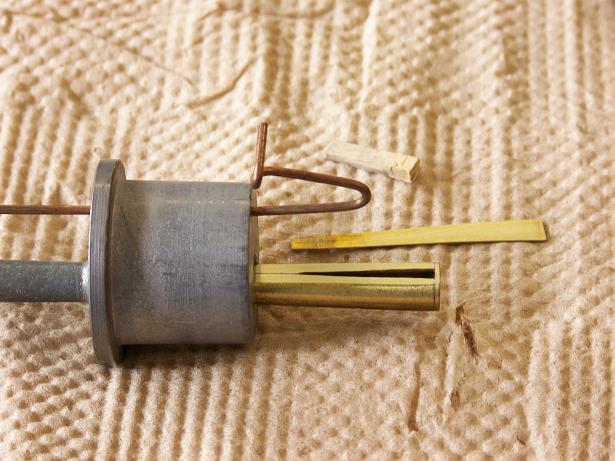
The pipe itself and the block have been cleaned by using a special brush on the inside of the pipe and then blowing out the loosend dust with compressed air. Now everything has to go back together.
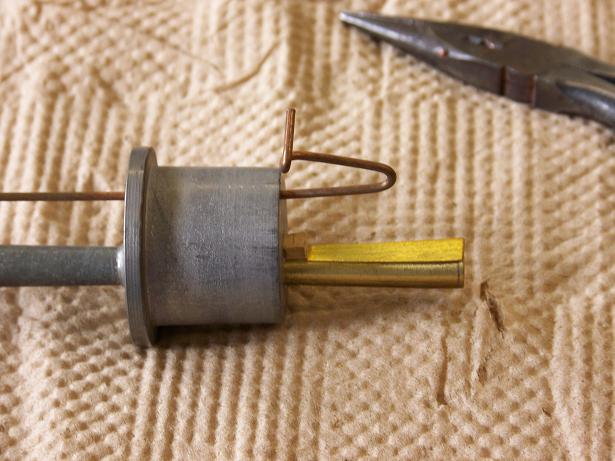
Tongue, shallot, and wedge are back in place.
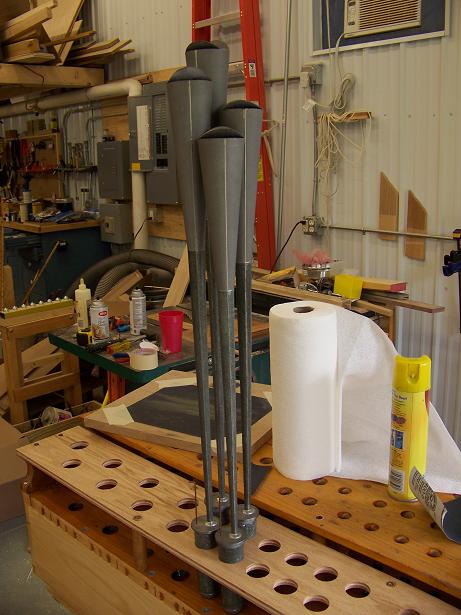
Here are four Oboe pipes cleaned and ready to go back in the organ.